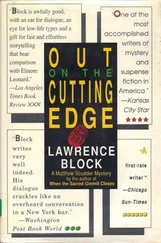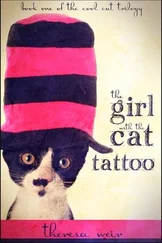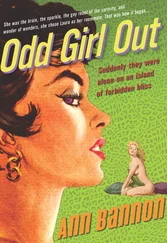The man calls others toward him and soon a small group is looking over my shoulder at the document on the screen. As I scroll through the images on my computer—the poesie album, the letters, and the photographs—a strong feeling of shared interest fills the room. The one who really knows about this, I am told, is Gert van Engelen, a local journalist who also works for the museum. E-mails are sent and messages are left on answerphones and meanwhile the group checks indexes and databases, giving suggestions as to where I might go to find out more. They feel almost like friends. By midafternoon I have a list of Web sites and publications and am watching a video recorded by the United States Holocaust Memorial Museum twenty-five years ago in which Mrs. Heroma, somewhat reluctantly, reveals the things that she and her husband did during the war.
—
IN THE 1930S the Heromas lived in Amsterdam, where Jan Heroma, having first completed a degree in psychology, was studying at medical school. The two of them were politically progressive, deciding to live together rather than get married, sharing a flat with the future socialist health minister Irene Vorrink (who was to become famous for decriminalizing recreational drugs in 1976). Having trained as a social worker, Took was employed by a trade union to provide political education for working-class women. At night in the flat, at a small desk with a typewriter, she translated German academic literature written by Jews into Dutch. This was necessary because, without these translations, German Jewish academics, persecuted at home by the Nazis, would find it difficult to find jobs in the Netherlands. To the Heromas, liberal, politically neutral Holland seemed a natural place of refuge.
By the time of the invasion, Jan Heroma had his own medical practice in Dordrecht, in an elegant white terraced house at 14 Dubbeldamseweg. An extra door had been fitted to allow patients direct access to the waiting room at ground level, and from there they could cross straight to the doctor’s study. The couple themselves lived in an apartment upstairs.
At first, the German invaders did little to disturb ordinary life in the Netherlands. They took over the reins of power (appointing Arthur Seyss-Inquart as Reichskommissar in charge of the civil administration), but the structure of government and the operation of services such as the police, the school system, shops, churches, and businesses remained more or less the same. Anti-Jewish measures ramped up over time almost imperceptibly: exclusion from air-raid shelters, an “Aryan Declaration” for members of the civil service, a requirement for the registration of all Jews. Then, from February 1941, mass arrests began, slowly at first. Those whom the Heromas had brought to apparent safety in their own country were now under threat, and the translations and new posts in the universities they had once provided were no longer of use.
From November 1941 onward, regular ads were placed in the bottom left-hand corner of the classifieds page of the local paper. Next to announcements from the dentist, the fashion boutique, and the concert hall, there were notices such as this:
J. F. HEROMA
PHYSICIAN
change of
consultation hours
On Krispijn at 11 o’clock
daily, apart from Saturdays;
PRIVATE CONSULTATION
daily from 1.30 to 2 o’clock
Where it mattered, people knew what these messages meant.
Across Holland, as the occupation gained in intensity, networks were being constructed to resist the Nazis: delicate lines of trust that connected couples like the Heromas in Dordrecht to distant others whom they had never met. These webs often clung to the holdfasts of prewar society, such as medical associations, student fraternities, churches, and political groups. Jan Heroma was a doctor and a member of the Social Democratic Workers’ Party and also the friend of many Jews in the academic world. This made the house at 14 Dubbeldamseweg a point of intersection. The little car that the Heromas owned made them unusually mobile, so that journeys between the houses of patients, sometimes far out into the countryside, traced fragile, invisible strands.
As Jan Heroma and his wife ferried people across the country and kept them hidden in their basement, others too were beginning to take action as part of networks in different towns. Jooske de Neve, for example, part of a resistance group called the Unnamed Entity, sat on trains from Amsterdam accompanying groups of children, herself shaking with a feverish headache of fear. Speaking long afterward, she recalled that she could always detect the moment at which other passengers recognized the quiet cluster of boys and girls as Jewish. She just had to hope that they would not tell. Once, a set of train guards began moving through the carriage, checking IDs and tickets. A wave of panic overcame her, and she ran to the toilet and flushed a pack of false identity cards (which she was ferrying in addition to the children) onto the tracks below. It haunted her conscience forever afterward that these false papers were found.
In Utrecht, Hetty Voûte, a biology student, joined a group that called itself the Children’s Committee. Searching for addresses to hide young boys and girls now separated from their parents, she cycled around the countryside calling at random on farmers for help.
As she stood at the gate of one farmhouse the owner told her, “If it is God’s wish that those children are taken, then that is God’s wish.”
Hetty looked straight at him. “And if your farm burns down tonight, then that is also God’s wish,” she replied.
Back home in the bookcase in her room she had a leather-bound volume with the title The Assembled Tales of John Galsworthy stamped on the spine. Within, there lay hidden a system of index cards that recorded the names and addresses of the 171 Jewish children she had saved.
Around the same time, in Limburg, at the southern tip of the country, another farmer was being presented with children to shelter, starting with a three-year-old girl who was left at his door. Looking back, one can see that it was hard for this man, Harmen Bockma, to keep his head above water. He already had a milk round early each morning and worked shifts at the local mine to make ends meet. To hide children he would need special spaces in his farmhouse, which would take money as well as time. And so, in order to get the paid leave from the mine that would be necessary for the work to be completed, Harmen Bockma cut off part of a finger from his own hand.
More stories such as these are to be found in the museum and in the Dordrecht municipal library. In a high-ceilinged café I talk with Gert van Engelen as he writes down e-mail addresses and phone numbers in my notebook and suggests places of wartime significance that I might visit beyond and within the town.
Two final stories stick with me. One is the case of Ger Kempe, a student doing the rounds in search of funding for a resistance group hiding children in late 1942. Having knocked at an unknown door, he was tentatively invited in by the old lady who answered it. Perched on a sofa in her sitting room, the young man delivered a speech that was met with awkward silence. The woman waited for a long time, giving no response, then eventually told him to come back in a few days’ time. When he did so, expecting little or nothing, the old lady gave him sixteen hundred guilders: a fortune that saved many lives.
The second story concerns a number of female students. By late 1942 the situation for the remaining Jews in the Netherlands had become utterly desperate, so much so that mothers were now leaving babies and young children on doorsteps in the hope that they would be taken in. The German authorities, aware of this trend, put out an official notice: from now on, all foundlings would be assumed to be Jewish and even those who had earlier been accepted and adopted by Aryan families were to be hunted down by the police. The group of young students could see only one solution. They would register Jewish babies as their own children, fathered by German soldiers. This would bring the certainty of safety, but also, of course, tremendous shame to the women themselves. Years afterward, An de Waard retold the story of her experience at the registry office, where she was made to wait on public view for a very long time. Eventually, under the clerk’s contemptuous gaze, she was able to register the child as William, a royal name, which for her was a little gesture of resistance. Like the five other babies saved in this manner, William survived the war.
Читать дальше












